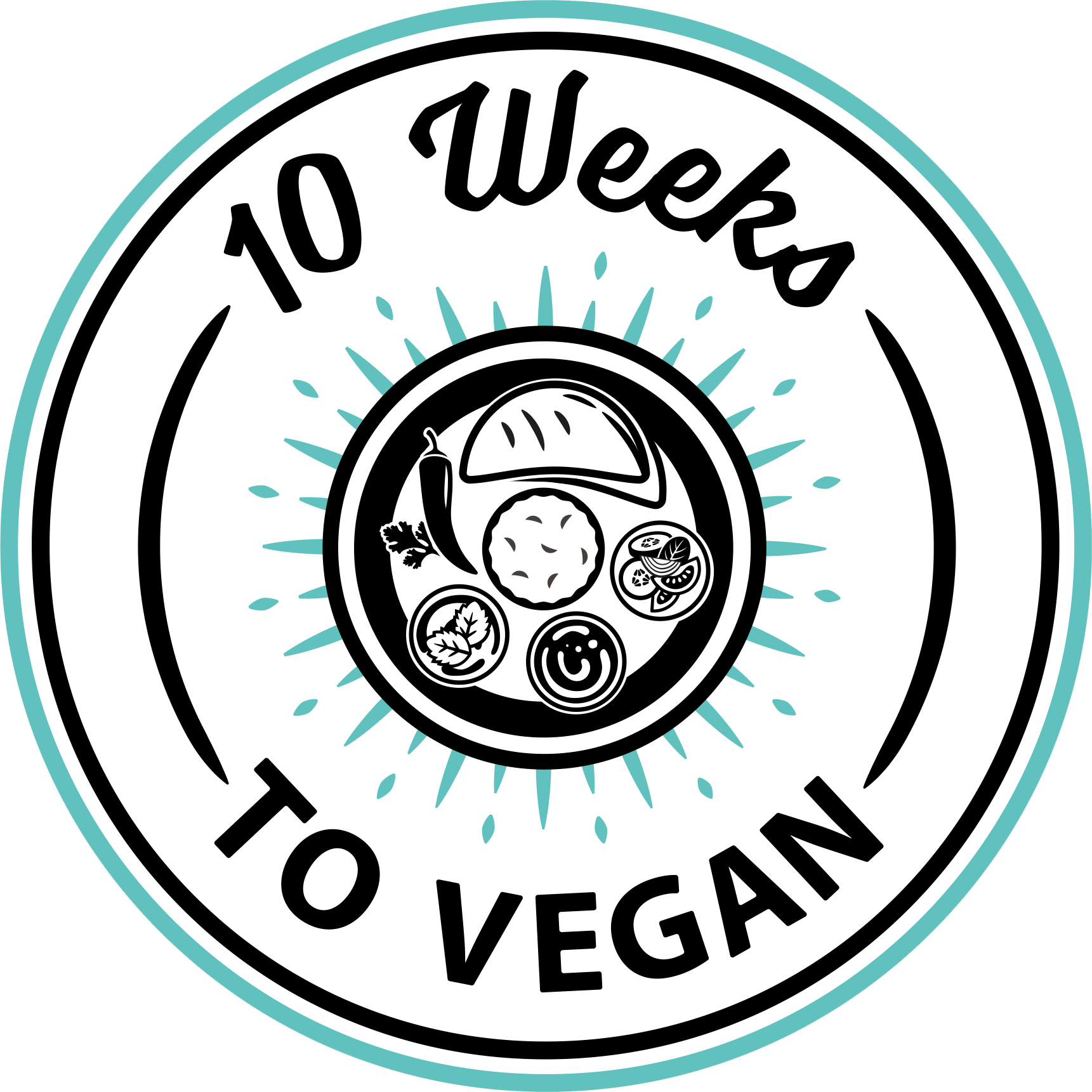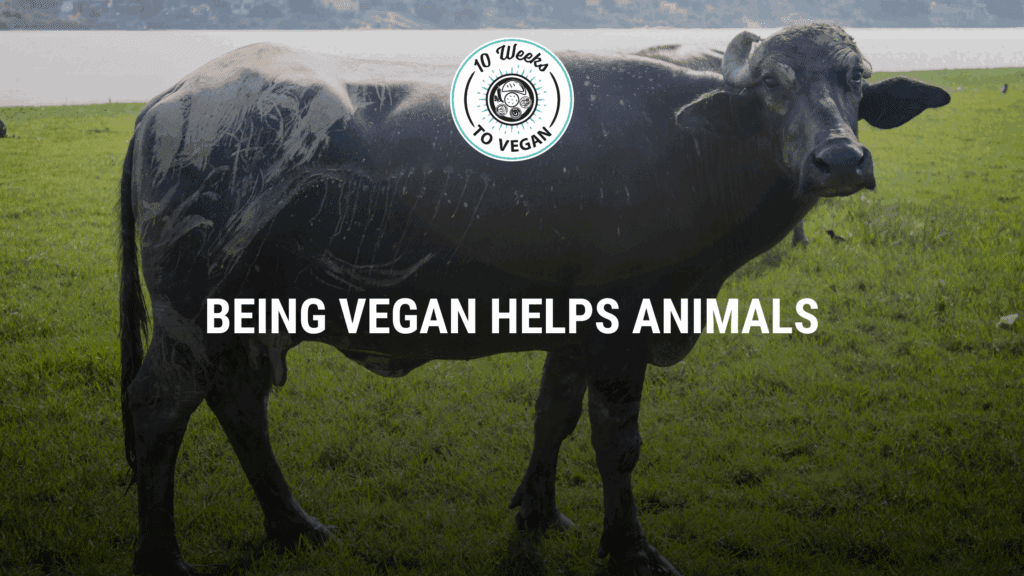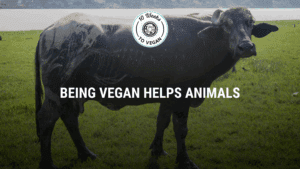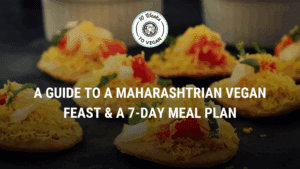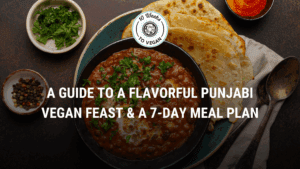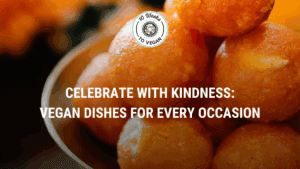This page contains two parts, each of which covers the main issues regarding the cruelty and abuse perpetrated against animals and humans by modern animal agriculture.
Part One
I think everybody has that capacity to stop and think and say, ‘If I knew you, I wouldn’t eat you.’ And in some ways, it really is that simple.
–Tom Regan, PhD, Professor of Philosophy, 1938-2017
Why love one but eat the other?
Check out our video about speciesism which sums up why so many people are vegan (0:59):
While most people are aware that farm animals are treated inhumanely, the details can be hard to bear.
Here’s a video of some animal advocates trying to comfort pigs on their way to slaughter—it’s not gory, but gives a glimpse into the suffering these animals must endure (2:05):
In some very rare but lucky cases, a pig might escape on the way to the slaughterhouse, sometimes due to transport truck accidents. Pigcasso is one of the lucky few who escaped and now paints (1:33):
Dairy cows are sociable and highly sensitive animals forced to endure a heartbreaking life no mother should ever have to experience. To produce milk for humans to drink, dairy cows are treated like milk machines—repeatedly impregnated against their will until they are considered “dry” and sent to slaughter or left to die on the roads.
Because a mother cow’s milk is given to humans, the baby calf is separated from her which causes both a great deal of stress. Mother cows call for their calves for days or weeks. Here’s a video of a mother cow chasing the truck as her baby is driven away (0:47):
In addition to forming bonds with their young, buffaloes are sensitive animals who can form bonds with other animals and humans, too. They’re widely exploited throughout the country for dairy and leather. Not only are they denied the basic freedom of movement but they’re also kept in highly unhygienic conditions.
Watch how a buffalo is fighting for her baby in this video (1:24):
In the egg industry, the male chicks are killed at birth. Some are gassed and some are macerated (ground up while still alive). Flocks of egg-laying hens are kept in warehouse-like sheds for up to two years before the entire flock’s egg production starts to decline and they’re all sent to slaughter.
Gita, a rescued hen, is now living a wonderful life at Peepal Farm (2:18):
Although animals tend to be much more intelligent than humans give them credit for, intelligence isn’t what matters—the ability to suffer and the desire to live is why we shouldn’t eat animals.
The question is not ‘Can they reason?’, nor ‘Can they talk?’, but ‘Can they suffer?’
–Jeremy Bentham, 1748–1832, An Introduction to the Principles of Morals and Legislation
A Cycle of Violence
By supporting the killing of animals for food, we uphold a cycle of violence that doesn’t end with the animal victims.
Animal agriculture isn’t just an enemy to animals, but it’s also a notoriously dangerous place for workers—where profit is placed above safety. Slaughterhouses in India employ thousands of workers who are forced to work in unhygienic conditions and are denied basic rights such as sick leave and weekly time off. Most of them don’t receive protective gear and can be seen working with their bare hands and in sandals or barefoot. Many illegal meat shops also employ children under the age of 14.
Below, workers are pictured slaughtering chicken inside the meat market of Kolkata.
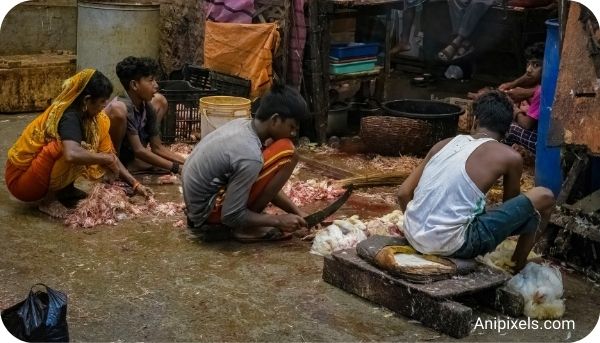
Being Vegan Makes a Difference!

The decision that has led millions of people to stop eating other animals is not rooted in arid adherence to diet or dogma, but in the desire to eliminate the kinds of experiences that using animals for food confers upon beings with feelings.
–Karen Davis, PhD, 1944-2023
Although most people still eat animal products out of convenience, the number of vegans is growing. While it’s easier to go with the flow, courageous people take a stand for what they believe in, especially standing up for victims of abuse. By going vegan, you’re removing your support from an industry that causes so much misery.
And you will make a difference.
Part Two
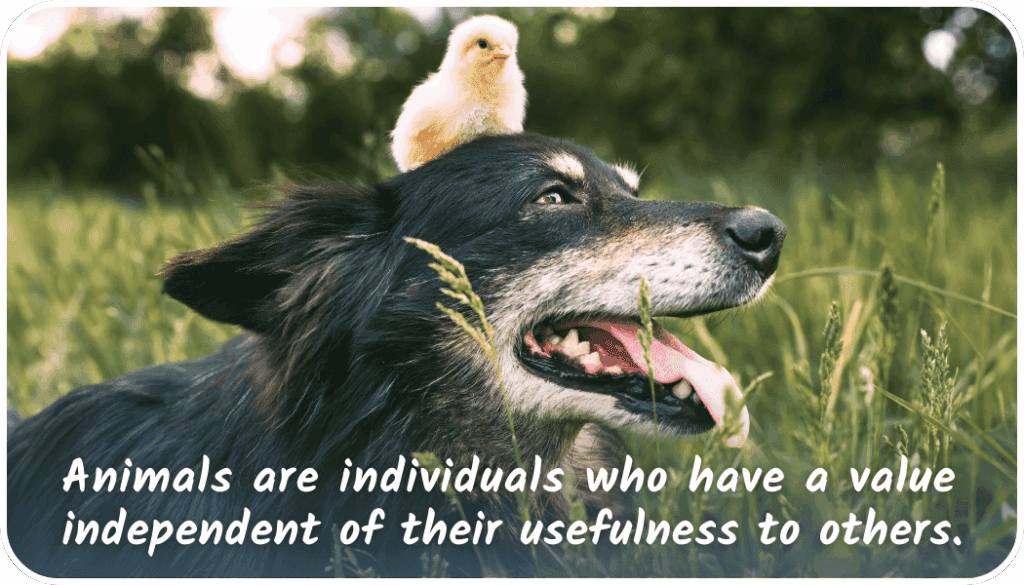
Why love one and eat the other?
We love dogs and cats while farmed animals such as cows, pigs, and chickens are seen as objects to be turned into food, leading to enormous amounts of unnecessary suffering.
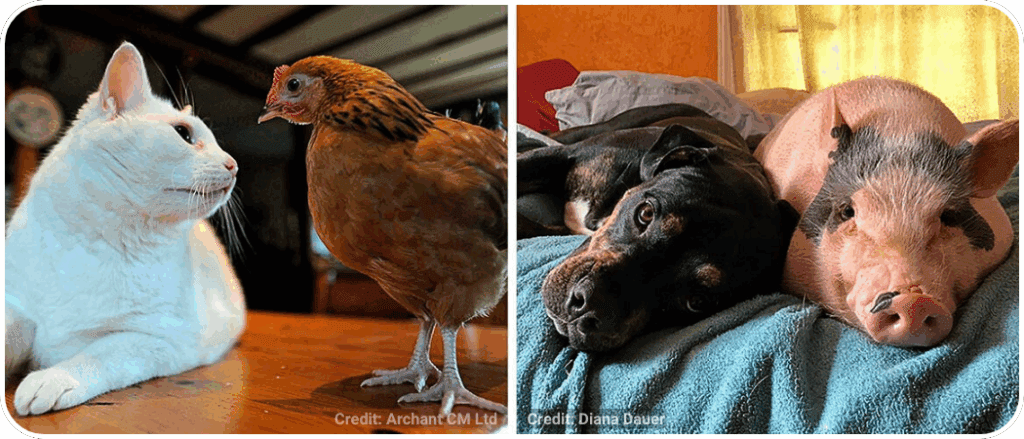
But watch what happens when some bacon lovers meet baby pigs (1:56):
Although most calves are of no use to the dairy industry and are left to die within weeks of being born. “Hanumanji” was luckily saved by our friends at Peepal Farm (1:53):
Here’s a heartwarming story about Tofu, a cow who is flourishing at Peepal Farm’s sanctuary after being rescued from the street where she was left with her mother to die (5:41):
Henrietta is a chicken who was rescued from a factory farm during COVID. She recovered from her early life of suffering and brought joy to her human family at a time when they needed it most (4:51):
Chickens raised for meat are kept by the thousands in large warehouses, packed together, breathing the ammonia from their waste. The tips of their sensitive beaks are cut off to prevent them from pecking each other under such crowded conditions.
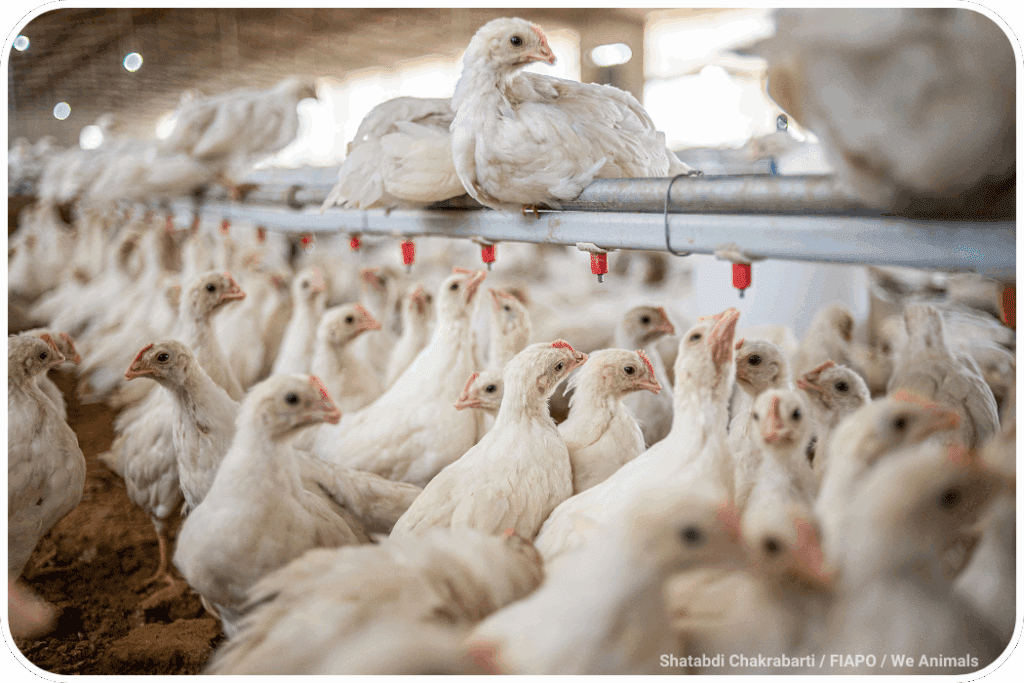
Watch Shrimp, a rescued rooster, take care of his injured friend, Basil, who was rescued from a factory farm (3:15):
While we wish it wasn’t true, the scientific evidence suggests that fish feel pain and can suffer. Large commercial nets scoop up everything in their path leading not only to the deaths of fish but all sorts of animals.
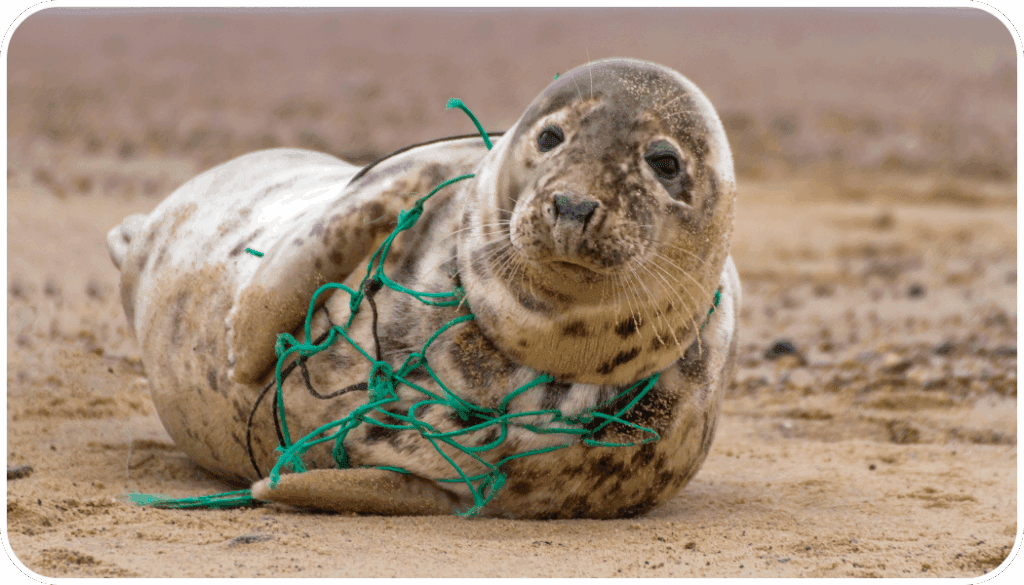
Watch rescuers free two seals from fishing lines that have tangled them together (3:44):
Some fish are dragged up from the bottom of the ocean and their bodies cannot withstand the difference in pressure leading to their eyes popping out and bladders bursting.
A Cycle of Violence
This brutal system also treats slaughterhouse workers as objects to be discarded.
National Public Radio’s 2016 exposé, Working the Chain, Slaughterhouse Workers Face Lifelong Injuries, describes how each worker must do thousands of repetitions per day with few breaks, causing a wide range of muscle and nerve injuries.
They make low wages and are fired when their injuries prevent them from working.
Worker advocate Gloria Sarmiento says, “The speed of the line is really fast. The supervisors are yelling all the time…They are treating us like animals.”
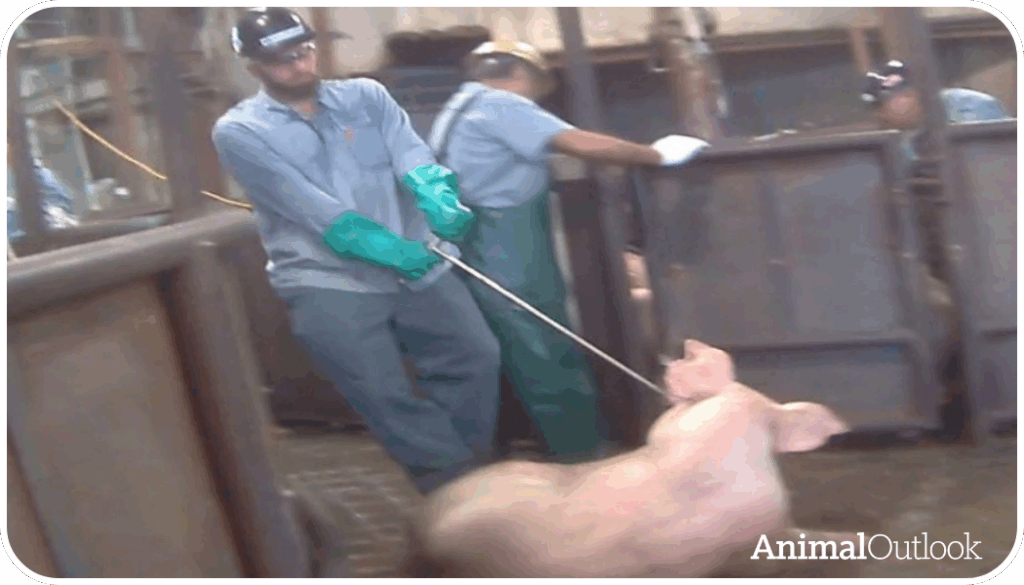
Being Vegan Makes a Difference!
Several polls indicate that the number of vegans in India is growing.
By joining the growing movement of people who oppose speciesism, you’ll reduce the demand for killing animals. As more people join us, we’ll reach a tipping point at which millions of animals will be spared.
